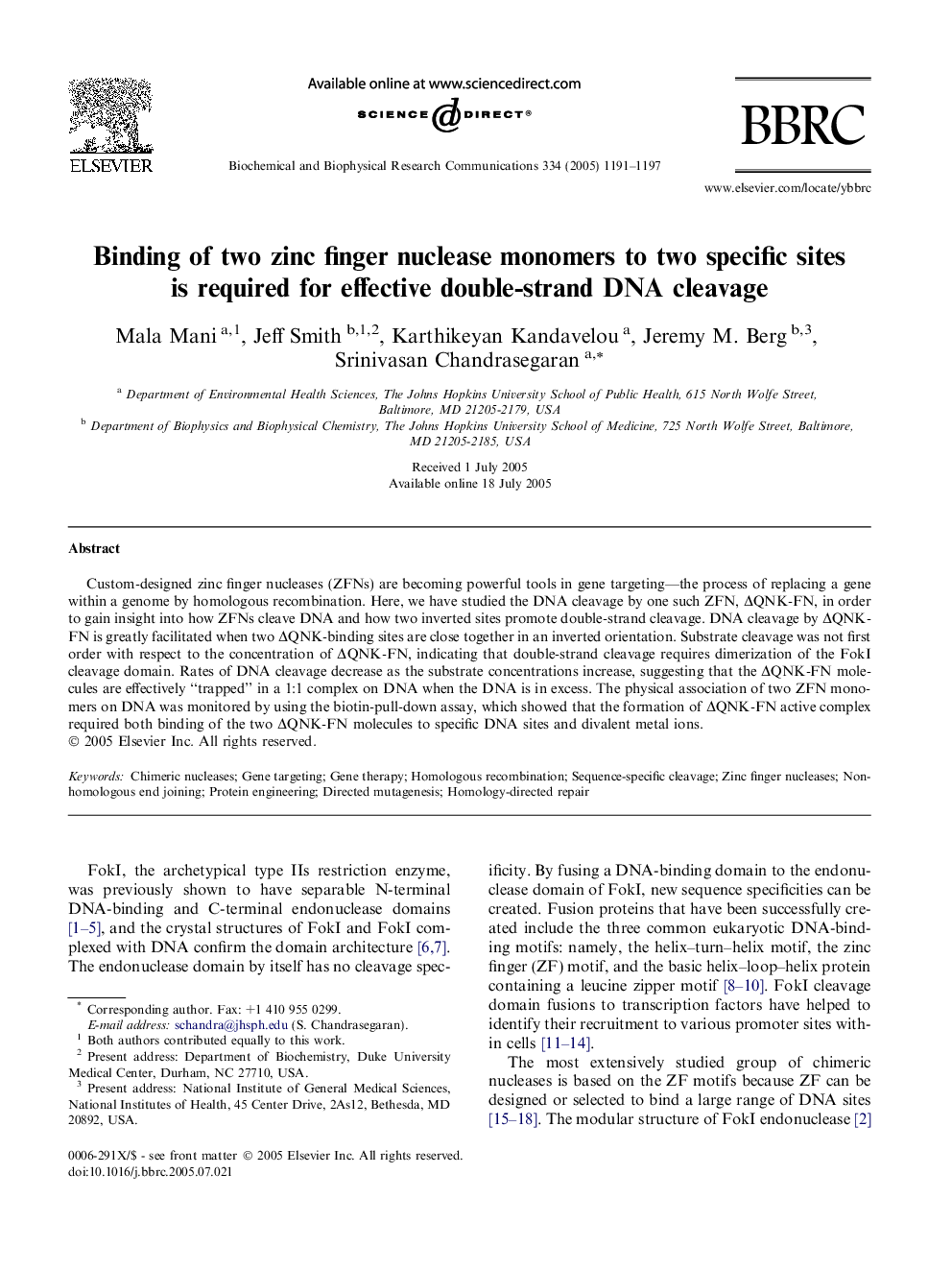| Article ID | Journal | Published Year | Pages | File Type |
|---|---|---|---|---|
| 10769031 | Biochemical and Biophysical Research Communications | 2005 | 7 Pages |
Abstract
Custom-designed zinc finger nucleases (ZFNs) are becoming powerful tools in gene targeting-the process of replacing a gene within a genome by homologous recombination. Here, we have studied the DNA cleavage by one such ZFN, ÎQNK-FN, in order to gain insight into how ZFNs cleave DNA and how two inverted sites promote double-strand cleavage. DNA cleavage by ÎQNK-FN is greatly facilitated when two ÎQNK-binding sites are close together in an inverted orientation. Substrate cleavage was not first order with respect to the concentration of ÎQNK-FN, indicating that double-strand cleavage requires dimerization of the FokI cleavage domain. Rates of DNA cleavage decrease as the substrate concentrations increase, suggesting that the ÎQNK-FN molecules are effectively “trapped” in a 1:1 complex on DNA when the DNA is in excess. The physical association of two ZFN monomers on DNA was monitored by using the biotin-pull-down assay, which showed that the formation of ÎQNK-FN active complex required both binding of the two ÎQNK-FN molecules to specific DNA sites and divalent metal ions.
Keywords
Related Topics
Life Sciences
Biochemistry, Genetics and Molecular Biology
Biochemistry
Authors
Mala Mani, Jeff Smith, Karthikeyan Kandavelou, Jeremy M. Berg, Srinivasan Chandrasegaran,
